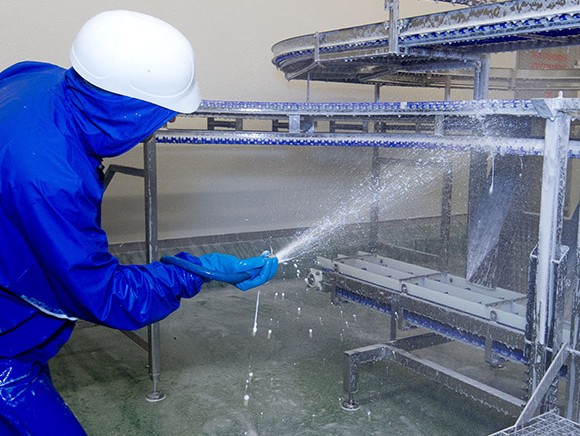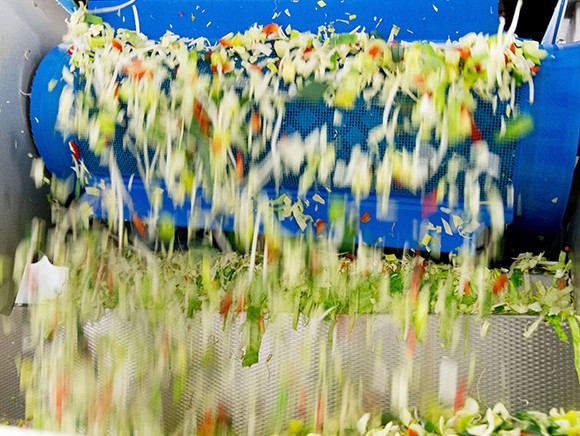
As a company, how far do you need to go in terms of working hygienically? Gert Visscher, director of Eco2Clean, regularly asks food manufacturing companies that question. There is no clear-cut answer. One thing he does know is that companies are required to take more and more responsibility for the hygienic aspect of their food safety procedures.
Governments and customers are placing ever-higher quality demands on food manufacturing and food processing companies, and the number of external quality checks and audits is on the rise. “Governments and retailers are increasingly requiring manufacturers to be active at audit level at all times to sufficiently safeguard hygiene,” says Gert Visscher, director of Eco2Clean. “That begs the question: how far does a company need to go in safeguarding hygiene?”
Besides supplying cleaning agents, Eco2Clean advises and supports companies in their efforts to improve and safeguard hygiene. It assesses the standard and quality of a company’s cleaning activities. The quality service conducts visual inspections and analyses the bacteriological results. “Clearly, pathogenic microorganisms such as Salmonella, Listeria and E. coli may definitely not be present at all, but the question is whether the total germ count always has to be zero,” comments Visscher. “The necessary cleanliness of an object or component depends on the type of product in question. Are the products susceptible to contamination? How much opportunity do the microorganisms in the production area have to multiply and spread? And the contamination rate of the food product itself is also important. What is the situation in the rest of the supply chain? Are there any stages between the production location and the end consumer in which potential contamination is eliminated? The first thing we do when discussing how companies can safeguard hygiene is ask them these questions,” says Visscher.
The Netherlands Food and Consumer Product Safety Authority (NVWA) does not place any concrete microbiological demands on the degree of surface cleanliness and hence does not monitor it. In other words, the NVWA makes the manufacturers themselves responsible for this. A clean surface is influenced by numerous factors which, in combination, dictate whether the cleanliness is at a food-safe level for production.
Visscher explains: “Improving the cleaning and hence the level of hygiene is not only the responsibility of the cleaning crew, but also of everyone involved, such as the production team, the maintenance staff and the quality department. Before the cleaning crew can be deployed effectively, it is important that Production ensures that the objects and spaces can be cleaned well. Machinery and equipment must be disassembled, the worst cases of dirt must be cleaned and no packaging or other materials may be left lying around that could obstruct the cleaning activities. Companies often check the cleaning crew’s end results but rarely consider what situation the cleaners face when they arrive.”
During storage and transport products such as cut meats and prepared salads are preserved through refrigeration only. This makes them high-risk items since they are not heated again before being consumed. “The most stringent standards are justified for these products,” comments Visscher. “But if a product has a naturally high germ count, such as vegetables, then one could question whether it’s necessary to use sterile equipment. As soon as the production line is switched on and the first vegetables hit the conveyor belt, it will be contaminated.” The director mentions another example: “Meat croquettes are frozen immediately after production, and then they go straight from the freezer into a deep-fat fryer at 180°C for immediate consumption. No contamination can survive that! So do the conveyors carrying the croquettes into the freezing unit have to be completely sterile?”

A company has to carefully consider its degree of hygiene in line with its production process and the treatment that the product receives. The aim is to provide consumers with products that are safe to eat. It is crucial to have clear justification for the decisions about the degree of hygiene. That starts with determining which aspects must be monitored, and how and how often they will be monitored. The number of sampling locations and the sampling frequency are related to the size of the facility and the risk level of the products manufactured there. In other words, the needs of a bakery facility making pastry products differ from those of a manufacturer of chilled food. This approach helps companies to better assess the hygiene risks associated with their cleaning activities.
Last but not least, Visscher advises manufacturers of extremely high-risk products to enlist the help of an expert to evaluate their product risks. “In the case of a calamity, scientifically based hygiene decisions give external authorities more insight into the choices a company has made.”
Source: © Eco2Clean